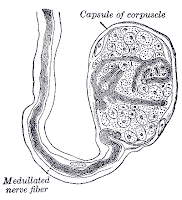Nevus depigmentosus is usually a congenital benign non progressive white macule (white patch or spot) with hypopigmentation. Nevus depigmentosus is stable in size and distribution, during the lifetime of the affected individual. The investigation on the histopathology and pathogenesis of this ailment is not complete and its cause is not fully understood.
Symptoms of nevus depigmentosus
These white spots appears as stable spots affecting any part of the body. However they have been found to affect the trunk, hands and feet often.They do not grow in size. They are usually present from birth and in rare cases they are formed at a later stages of life.
These lesions appear round or oval and grow only with proportion to the growth of the person.
In rare cases certain neurological afflictions have been associated with this ailment; delayed development, seizure disorder and mental retardation have been associated.
Causes of nevus depigmentosus
These white spots are believed to form due to functional abnormalities of the melanocytes and morphological anomalies of melanosomes.This results in the lowered pigment production in the affected area giving the characteristic pale white spots in the skin.
Differential diagnosis of nevus depigmentosus
Differential diagnosis for this disorder is done to rule out the possibility of affliction by vitiligo (leucoderma) and leprosy.Unlike leucoderma the white patches or spots are usually present right from birth.
Leucoderma normally show hyperpigmented border to the lesions, whereas in this disorder there is no clear cut hyperpigmented border.
Vitiligo white spots normally grow in size and spread. In rare cases they disappear altogether.
In nevus depigmentosus disorder the white spots are stable and do not spread.
Vitiligo white spots normally occur around the orifices of the body like eyes, ears, nostrils, mouth, umbilicus and genitalia.
Nevus depigmentosus white spots are usually found on the trunk, hands and legs.
The back, chest and buttocks are the most common sites of affliction.
These white spots do not show any alteration of sensitivity or texture of the affected area.
In leprosy the white pale spots occur at a later stage of life and show mild inflammation, hair loss, shine in the skin and numbness. Histological study can differentiate leprosy.
The differential diagnosis for nevus depigmentosus includes hypomelanotic macules of tuberous sclerosis, vitiligo, and anemicus.





.jpg)


